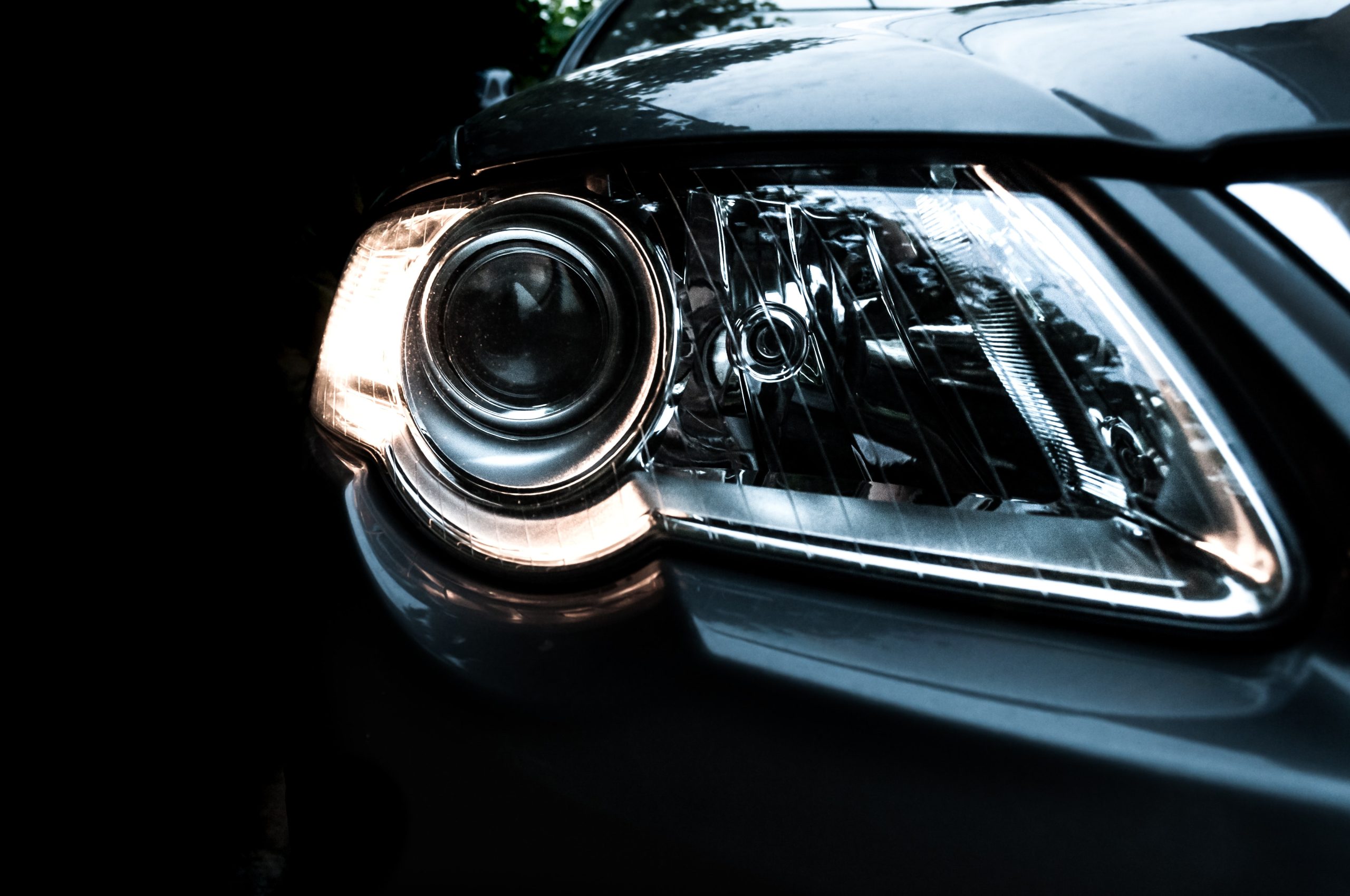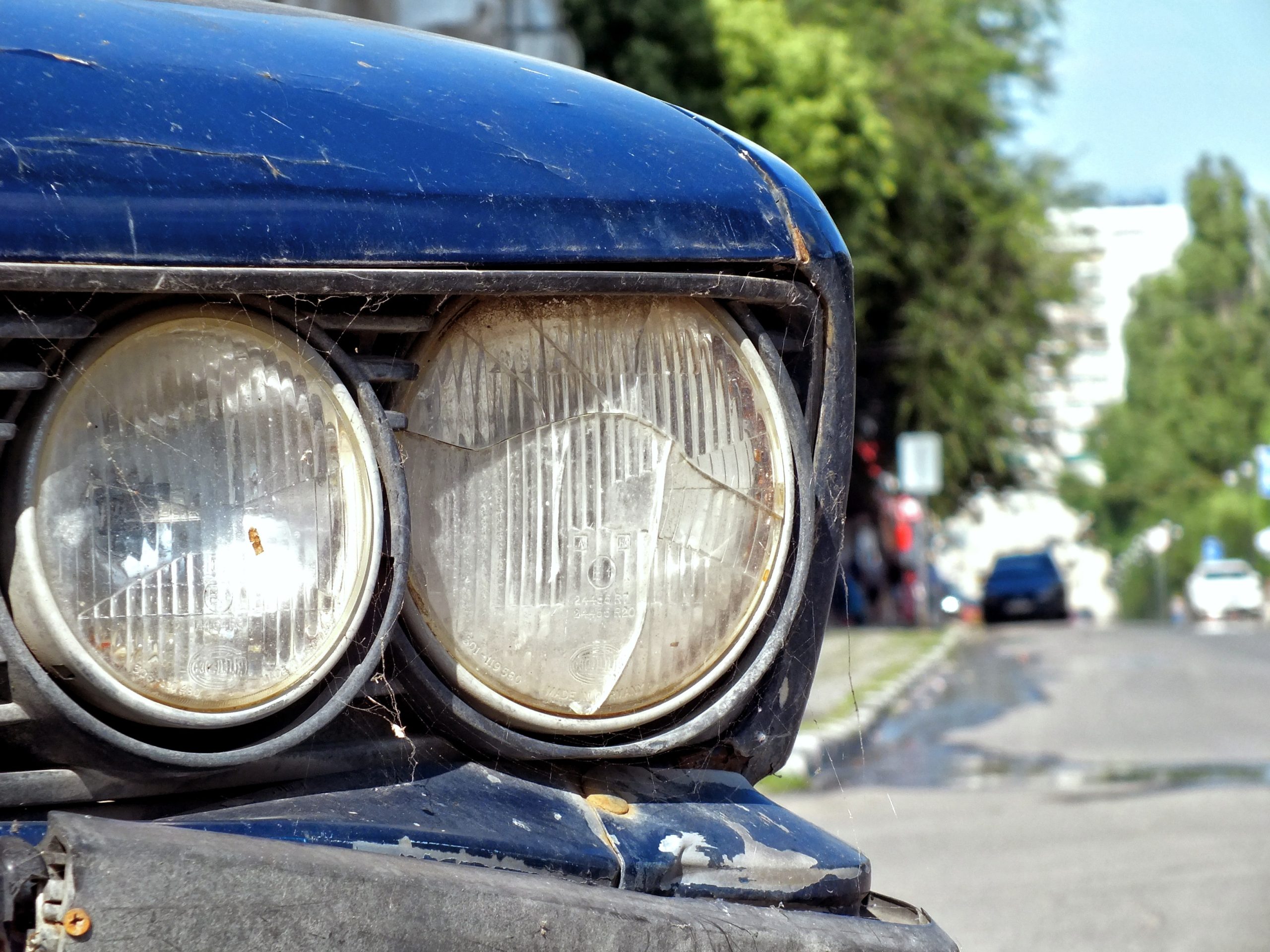Why does my headlight keep going out? Headlights that keep going out can be very frustrating.
There are several possible reasons why your headlight may be going out. The most common ones include:
- Poor Quality Bulbs: Halogen bulbs burn out quickly
- Touching the glass of the bulb during installation
- Excessive vibration
- Condensation / Water in the housing
- Extreme temperatures
- Faulty voltage regulator / stabilizer
- Blown Fuse
- Loose wiring
- Defective switch
- A corroded electrical connection
Why Does My Headlight Keep going Out? 10 Most Common Reasons
1. Poor Quality Bulbs: Halogen Headlight Bulbs Burn Out Quickly
If your car has halogen headlights, it’s important to note that the bulb can wear out over time due to the heat generated by the burning filament in the bulb. When this happens, the high beam and low beam may start flickering until eventually they go out entirely.
2. Touching the Glass of the Bulb During Installation
Touching the glass bulb of a headlight can cause it to burn out faster in several ways. First, the oil and dirt from human hands can interfere with the electrical contact between the filament and base, causing a voltage drop that reduces light output and causes premature failure. Additionally, heat from human hands can increase dramatically when in contact with metal or glass, which can damage the delicate LED structure inside the bulb by overheating it. The extra heat put on the bulb further stresses its components, shortening its lifespan. This is why touching bulbs of any type should be avoided for best performance.
Furthermore, when someone touches a headlight bulb they risk damaging the vacuum seal around its base which is necessary to contain the inert gas present in halogen bulbs. This gas helps create more intense illumination by increasing wattage without compromising filament integrity. If this seal is damaged then air will enter into the bulb and reduce its efficiency while also leading to premature burnout of filaments due to oxidation caused by oxygen exposure.
Finally, touching a headlight bulb runs the risk of leaving loose debris that may come in contact with vital components such as wiring which could lead to a short circuit resulting in instant failure or degradation over time. Additionally, physical damage caused by mishandling can also reduce light output quality or lead directly to burnouts if an internal component becomes damaged or disconnected as a result of heavy handling or impact from dropping. All these reasons make it highly important to avoid touching headlight bulbs whenever possible for optimal performance and longevity.
3. Excessive Vibration
Excessive vibration can cause a headlight bulb to burn out faster due to the increased wear and tear that it inflicts on the delicate glass filament. When the bulb is vibrating, there is an increased amount of strain put on the filament, causing it to heat up faster than normal. This accelerated heating leads to a much shorter lifespan for the bulb since it has been subjected to more wear and tear than if it had been left undisturbed. Additionally, vibration can also cause the thin wire in the bulb to break prematurely. This again reduces its lifespan as the broken filament will not be able to generate light anymore.
The amount of vibration that a headlight bulb experiences will depend on where it is located and how much shock that area experiences regularly. For example, if one were driving over a bumpy road often, then their headlights would be subjected to significant amounts of vibration. This would take its toll on the bulbs and result in them burning out more quickly than they otherwise would have if they were subjected to lesser amounts of vibration. Furthermore, cars with stiff suspensions which do not absorb shocks well will also put extra stress on headlights as they travel over uneven surfaces at relatively higher speeds than when going slowly over smoother terrain.
When replacing headlight bulbs, one should consider changing them more frequently than usual if excessive amounts of vibration are expected for them or if their car has little suspension dampening capability resulting in harsher impacts from road irregularities. Prolonging replacements may lead to premature failure of headlight bulbs due to accelerated wear and tear from excessive vibration.
4. Condensation / Water in the Housing
Condensation in a headlight bulb can lead to faster burning out because of the increased heat and moisture that it causes. When this happens, the heat generated by the light bulb is amplified and accelerated, leading to a shorter life span of the bulb.
Additionally, the moisture trapped within the lens can cause corrosion of the internal components, leading to failure. Furthermore, when there is condensation inside the lens, it can obstruct light from reaching its intended target, meaning that less light is available for use by drivers at night or during other low-light situations.
The moisture itself also acts as an insulator and further amplifies heat buildup which accelerates burnout of the bulb even further. The build-up of dust, dirt, and debris in a headlight bulb can also cause damage over time due to increased surface area which traps more heat and increases stress on components.
All these factors make it so that condensation in a headlight bulb contributes to accelerated burnout due to higher temperatures and reduced efficiency within its components.
5. Extreme Temperatures
Extreme temperatures cause a headlight bulb to burn out faster because the filament inside the bulb is made of tungsten. Tungsten is a metal that is very sensitive to both high and low temperatures, so when the temperature changes too much, it can cause the filament to break.
6. Faulty Voltage Regulator / Stabilizer
A faulty voltage regulator can be one of the main causes of a headlight bulb burning out faster than usual. When the voltage regulator is not properly regulating the electrical current, it can cause an excessive amount of power to be sent to the bulb.
This over-voltage will cause extra stress on the filament inside the light bulb, resulting in its premature failure. The higher voltage also causes more heat to be generated in the filament, making it more likely to burn out prematurely due to thermal fatigue.
Another possible consequence of a faulty voltage regulator is that it may cause an abnormal rate of current pulsation, which can put additional strain on the fragile filament and make it more prone to failure.
It should also be noted that poor electrical connections or wiring can also cause headlight bulbs to burn out faster, as this can create resistance in the circuit which results in increased current and heat buildup within the filament.
7. Blown Fuse
Checking and replacing the fuse in a car for the headlights is a relatively straightforward task. To get started, locate the fuse box in your vehicle, which should be near the engine or dashboard. Once the fuse box has been located, use a set of pliers to carefully remove any fuses that appear to be burned out or damaged. Look for any signs of corrosion or discoloration on the metal prongs of the fuse.
Once you have identified which fuse needs to be changed, purchase a replacement from your local auto parts store. Make sure you get one with an equivalent amp rating as that of the existing one; otherwise, it may not fit. Before removing it from its packaging, check to ensure that there are no physical defects such as broken wires or exposed insulation.
Once you have your new fuse, insert it into its slot in the fuse box and push down firmly until it clicks into place. You can then take a few moments to check all other fuses to confirm that they are properly connected and working as intended before moving on with your work. As a precautionary measure, make sure you double-check all connectors and test each light once more after installing the new fuse just to make sure everything is good to go.
In addition to ensuring that your headlights are working properly after replacing a blown fuse, regularly inspect other components associated with them such as headlight bulbs and wiring harnesses for any signs of wear and tear. It’s also important to keep an eye out for any cracks in these components and replace them if necessary; not doing so can lead to further electrical problems down the line.
8. Loose Wiring: Age & Wear and Tear
It’s also possible for a headlight to go out due to age-related wear and tear on its internal components or wiring harnesses. Over time, metal connectors can become corroded due to moisture penetration and short circuit, leading to power loss in one or both headlights.
9. Defective Switch
In addition, a failing relay switch can cause one of your headlights to shut off if you attempt to turn it on but don’t get any response from the light itself. This part helps deliver power from the battery directly to the headlight when you toggle between high and low beams. If it isn’t functioning properly, then you won’t be able to use either beam setting.
10. Corroded Electrical Connection
Finally, if you find that both your headlights are going off intermittently or with little warning, then it could indicate a larger problem with your vehicle’s electrical system as a whole. In such cases, it’s best to have an experienced professional inspect all of your vehicle’s wiring and components for any signs of damage or corrosion before attempting any repairs yourself.
What Causes LED Headlights to Burn Out?
LED headlight bulbs can burn out due to a variety of factors.
One common cause of premature burnout is excessive voltage or current, which can overload the bulb’s circuitry and cause it to overheat.
Other causes include water and moisture damage, dirt or dust buildup inside the bulb, uneven tightening when installing the bulb, vibration caused by a loose connection, and extreme temperatures.
In addition to these physical causes, there are also chemical causes for LED headlight bulbs burning out prematurely. Heat generated from the temperature of the circuit board can cause thermal runaway.
Poorly designed circuit boards with inadequate cooling systems can also result in similar thermal runaway issues.
Finally, some LED headlights have an expiration date because the phosphors used in them degrade over time due to exposure to light and heat, which results in output significantly declining or the bulb failing altogether.
What Causes HID Headlights to Burn Out?
HID (High Intensity Discharge) headlight bulbs can also suffer from premature burnout. These types of bulbs provide a brighter, more intense light than LED headlights but require more energy to operate.
Excessive current or voltage is one of the most common causes of HID headlight bulb failure, as it can overload the circuitry and produce excess heat that will cause the bulb to fail prematurely.
In addition, dirt or dust buildup inside the bulb can act as an insulator, leading to overheating and eventual burnout.
Poorly designed cooling systems combined with extreme temperatures outside of the bulb’s operating range can also result in thermal runaway and photobiological degradation of the phosphors used in these bulbs.
Another factor causing premature failure is vibration from loose connections on the car’s wiring harness, which can lead to greater wear-and-tear on the bulb and its components over time.
Finally, HID headlights have a finite lifespan due to their sensitive materials; over time, exposure to light and heat will cause the phosphors contained within them to degrade and decrease output or fail altogether.
What To Do If Your Headlights Suddenly Go Out
If your headlights suddenly go out, it is important to take appropriate steps to ensure your safety on the road.
- The first thing to do is make sure you are in a safe place. If possible, drive off of the main roads and onto the shoulder of a quiet street or parking lot. Try to find a well-lit area to assess the situation and see if you can spot the cause of the outage.
- The next step would be to check the fuses for any blown fuse or burned marks. Replacing a fuse may resolve this issue if that is what caused your headlights to fail. If replacing or testing fuses does not fix the problem, then you will need to have an auto mechanic inspect it further.
- Another potential cause may be a loose wire that has become disconnected from its power supply due to vibrations while driving. Check all wiring connections and inspect them carefully for damage or corrosion. If necessary apply electrical contact cleaner around corroded areas, as this may help get a better connection between components and their power supply.
- Lastly, you may need to look into replacing bulbs as they can go out more easily than some other components in headlight systems due to extreme temperatures and constant vibration while driving over bumpy surfaces. It’s recommended that headlight bulbs should be changed every two years regardless, so if it’s been longer than that then it’s time for an upgrade anyway!
All of these steps should help restore your headlights back into working condition; however, if any repairs are needed, it’s best left up to professionals with experience handling automotive electrical systems who can properly diagnose and fix any issues you might be having with your lights quickly and safely.
Is It Illegal to Drive with One Headlight Out?
Yes, it is illegal to drive with one headlight out. Depending on the state or country you live in, the consequences can vary. Most states and countries have laws that require all drivers to keep their headlights in working order, and failure to do so can result in a citation. Driving at night without both headlights functioning properly can not only make the vehicle less visible to other drivers on the road, but can also decrease visibility for the driver, making it difficult to see obstacles ahead of them. Even if a driver is driving during daylight hours with one headlight out, they could still be at risk for receiving a ticket.
In some cases, depending on where a driver lives, there may also be additional penalties for operating a vehicle with non-functioning headlights. Such penalties may include fines or even suspension of license or registration. Not only that, but driving with one headlight out could put other drivers at risk as well as pedestrians crossing roads who might not be able to see the car approaching until it’s already too late. For these reasons, many states and cities have laws requiring vehicles to have both headlights operational when driving any time day or night.
Are Headlight Bulbs Covered Under the Factory Warranty?
Whether or not headlight bulbs are covered under a car’s factory warranty will depend on the specific vehicle and its particular warranty agreement. Generally speaking, however, most factory warranties will not cover the replacement of headlights or other external lighting components; instead, they are considered to be maintenance items that should be regularly inspected and replaced as necessary.
When it comes to regular maintenance, headlights play an essential role in vehicle safety. Their illumination helps both drivers and pedestrians alike to better see their surroundings and spot potential hazards in time to react accordingly. As such, replacing these bulbs on a regular basis is often a necessity, even if they are not covered under the original factory warranty.
Fortunately, headlight bulbs are relatively inexpensive when compared to many other parts used in a vehicle’s construction. In some cases, drivers can install them themselves with minimal technical skill; however, it is always recommended that this job be done by a qualified technician in order to ensure that everything is up to code and working properly. Such technicians should also be able to provide advice on which bulbs would best suit the driver’s needs and provide assistance with installation if necessary.
In addition, manufacturers may offer extended warranties or service contracts for additional protection against costly repairs or replacements of headlight bulbs down the line. Drivers should look into any such options available for their particular make and model before making a purchase decision so that they can gain peace of mind knowing their car is properly taken care of over its lifetime.
Final Word
Headlight bulbs can go out for a variety of reasons. The most common reason is that the bulb has reached the end of its life and has burned out. If that is not it, it might be best to take your vehicle to a professional mechanic to properly diagnose and fix the problem.




